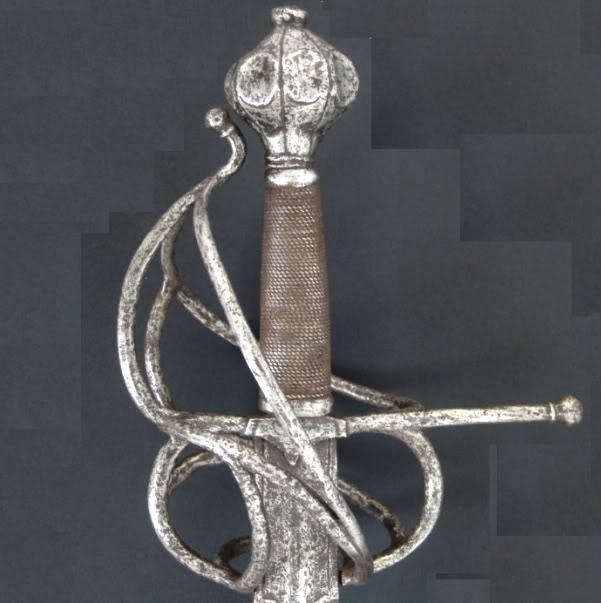I hesitate between calling it a sword or a rapier; the 30 mm blade (1,18") is a bit wide for a rapier ... until a better opinnion.
Seller dates it 16th. century; i wouldn't reject a more accurate beg. 17th. century ... again until a better opinnion.
One quillon only; no other one missing.
A beautiful heavy pommel.
Double edged blade length 93 cms (36,5").
Grip wiring restored in the 19th. century.
Seller says origin is central Europe; what do you guys think ?
The fainted mark on the blade seems to be of these generical eyelash symbolic symbols.
A rather important detail; seems to me this is a left hander, which would make it a bit more rare. Can anyone confirm this?
I will be much obliged for your coments.
Fernando
.






 [/img]
[/img] 
